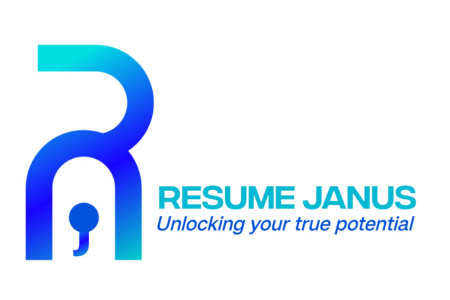A resume is the most important document as it reflects your career journey, it is the very 1st impression you create on a prospective employer. It comprises various sections like the summary, skills, education, certifications, and so on, but one major section that plays a critical role is the Work Experience. It is very important to structure it perfectly highlighting your growth path, key achievements, and how you’ve added value in your current & previous roles. The following are some effective approaches to presenting your work experience impressively.
1. The Right Resume Format
Select the most suitable format for your resume. The format depends on various aspects, such as your growth path, the level of experience you hold, and the job you’re applying for.
- Chronological Format: It is the widely accepted format in the industry, it lists your work starting with your most recent position. This format is suitable for those who have steady career history and a logical career progression.
- Functional Format: This format is more focussed on skills and qualifications rather than work history. It’s particularly useful for people making career transitions, or those who have lots of career gaps. The functional format combines all your experiences and highlights your achievements, skills & expertise and how they relate to the job applied for.
- Blended Format: This format combines the above-mentioned formats. It focuses on both specific skills and achievements while clearing stating the chronological work experience timeline. This format is fit for people with varied skills and experience
2. Work Experience Structuring Effectively
One should structure the work experience section in such a way that it is easy to read and comprehend. A well-structured work experience section has following elements:
- Job Title/Designation: Start with the designation you hold, it clearly conveys your experience level. Make sure the job title is bold or a slightly larger font.
- Company Name and Location: List company name and location (city, state/country).
- Employment Duration: Include the months and years you worked at each position (e.g., January 2020 – March 2023). Consistent formatting is very important. This helps employers gauge your experience duration and identify any employment gaps.
- Key Responsibilities and Achievements: Use bullet points while jotting down the key responsibilities and achievements. Use strong action verbs like directed, headed, or led at the start of each sentence. Ensure each sentence has cause and effect relationship.
3. Highlight Your Achievements
Employers/Recruiters are interested in what you’ve achieved, not just what you were responsible for. Focusing more on achievements makes your experience more convincing.
- Example: ‘Handled operations team,” instead use, “Heading a 10 member operations team resulting in a 20% increase in operational excellence.
- Quantify Your Achievements: Use numbers/metrics to quantify your accomplishments. Percentages, amounts, time saved, or days reduced make achievements more impactful. Quantifying your experience has more weight in the eyes of a recruiter or a prospective employer.
4. Tailor Your Experience
One of the biggest mistakes job seekers make is submitting the same resume for every job application. One should always customize the existing resume as per requirements of job applying for.
- Example: If a job description emphasizes project management and cross-functional collaboration, highlight your experience in leading projects and working with cross-functional teams. Use language similar to that in the job posting to make a connection between your experience and the role’s requirements.
5. Keep It Brief and Relevant
The resume length should not exceed 2 pages. Focus on your most recent positions, especially those that are directly related to the job you’re applying for. For previous experiences/roles provide only essential details (job title, company, and dates) with achievements.
6. Use Bullet Points & Bolding
Recruiters/Employers spare only a few seconds to glance at your resume. Make sure it creates an impact within the 1st few seconds.. Deploy bullet points to organize your resume. Each bullet point should be concise, no longer than 2 lines. This helps in highlighting your achievements. Use bolding wherever possible, like when you are mentioning numbers, or percentages, so that it attracts attention.
7. Incorporate Relevant Skills
Highlight key skills within your work experience that align with the job you’re applying for. Put core and soft skills in all bullet points. For example, if a job description emphasizes technical skills like proficiency in specific software, include examples where you’ve used that software/technology to achieve a specific goal.
8. Include Internships or Voluntary Work
Mentioning internships, volunteer work, or part-time jobs can also be valuable additions to your work experience section. Treat these roles with the same level of detail as any paid position. Focus on achievements which aret relevant to the job you are applying for.
- Example: If you volunteered as a project manager for a local non-profit, describe how you “Led a team of volunteers to execute a community outreach program, increasing participation by 40% through targeted marketing campaigns.”
9. Maintain Consistency in Formatting
Consistent formatting is key to creating a professional-looking resume. Ensure that fonts, font sizes, bullet points, and spacing are same throughout the document. This helps in maintaining readability and gives your resume a professional look.
- Apply clean fonts like Cambria, Calibri, or Tahoma. Font sizes between 10 and 12 points. Larger font for headings only.
- Proofreading
Always proofread the resume multiple times. It should be free from errors and inconsistencies. You can ask for help from friends or a mentor to review it. Ensure there are no typos, grammatical errors, or inconsistencies in formatting can reflect poorly on your attention to detail.
- Use Grammarly or built-in spelling and grammar checkers, but don’t rely solely on them. Manual proofreading ensures a higher level of accuracy.
Closing Note
Work experience section is the main part of your resume showing what you offer to employers. Using right format, organizing your experience well, focusing on achievements, and customizing your resume for each job, can help in making an impactful resume.


